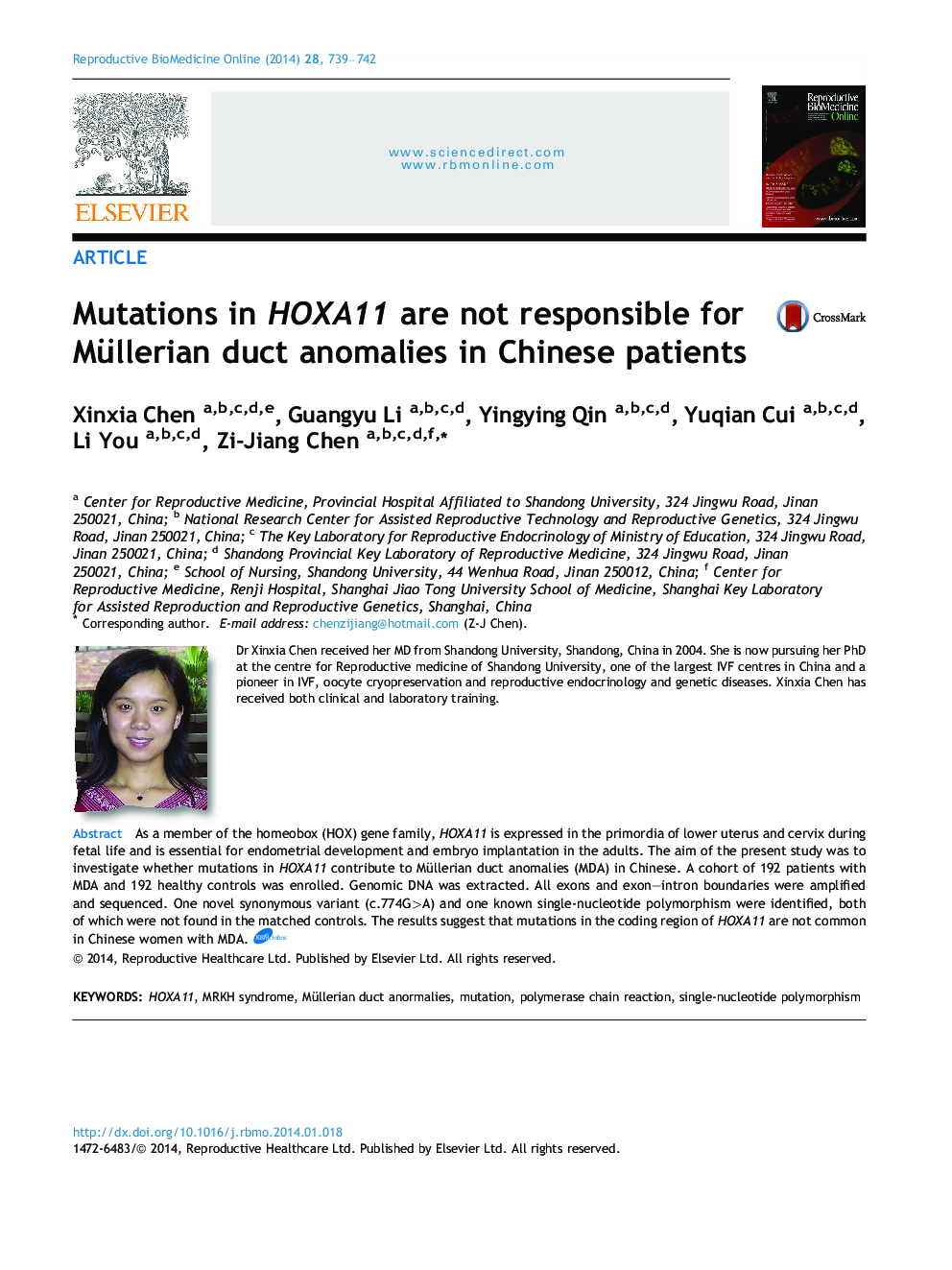| Article ID | Journal | Published Year | Pages | File Type |
|---|---|---|---|---|
| 3970332 | Reproductive BioMedicine Online | 2014 | 4 Pages |
As a member of the homeobox (HOX) gene family, HOXA11 is expressed in the primordia of lower uterus and cervix during fetal life and is essential for endometrial development and embryo implantation in the adults. The aim of the present study was to investigate whether mutations in HOXA11 contribute to Müllerian duct anomalies (MDA) in Chinese. A cohort of 192 patients with MDA and 192 healthy controls was enrolled. Genomic DNA was extracted. All exons and exon–intron boundaries were amplified and sequenced. One novel synonymous variant (c.774G>A) and one known single-nucleotide polymorphism were identified, both of which were not found in the matched controls. The results suggest that mutations in the coding region of HOXA11 are not common in Chinese women with MDA.As a member of the homeobox gene family, HOXA11 is expressed in the primordia of lower uterus and cervix during fetal life and is essential for endometrial development and embryo implantation in the adults. The aim of the present study was to investigate whether mutations in HOXA11 contribute to Müllerian duct anomalies (MDA) in Chinese. A cohort of 192 patients with MDA and 192 healthy controls was enrolled. Genomic DNA was extracted. All exons and exon–intron boundaries were amplified and sequenced. One novel synonymous variant (c.774G>A) and one known single-nucleotide polymorphism were identified, both of which were not found in the matched controls. The results suggest that mutations in the coding region of HOXA11 are not common in Chinese women with MDA.
